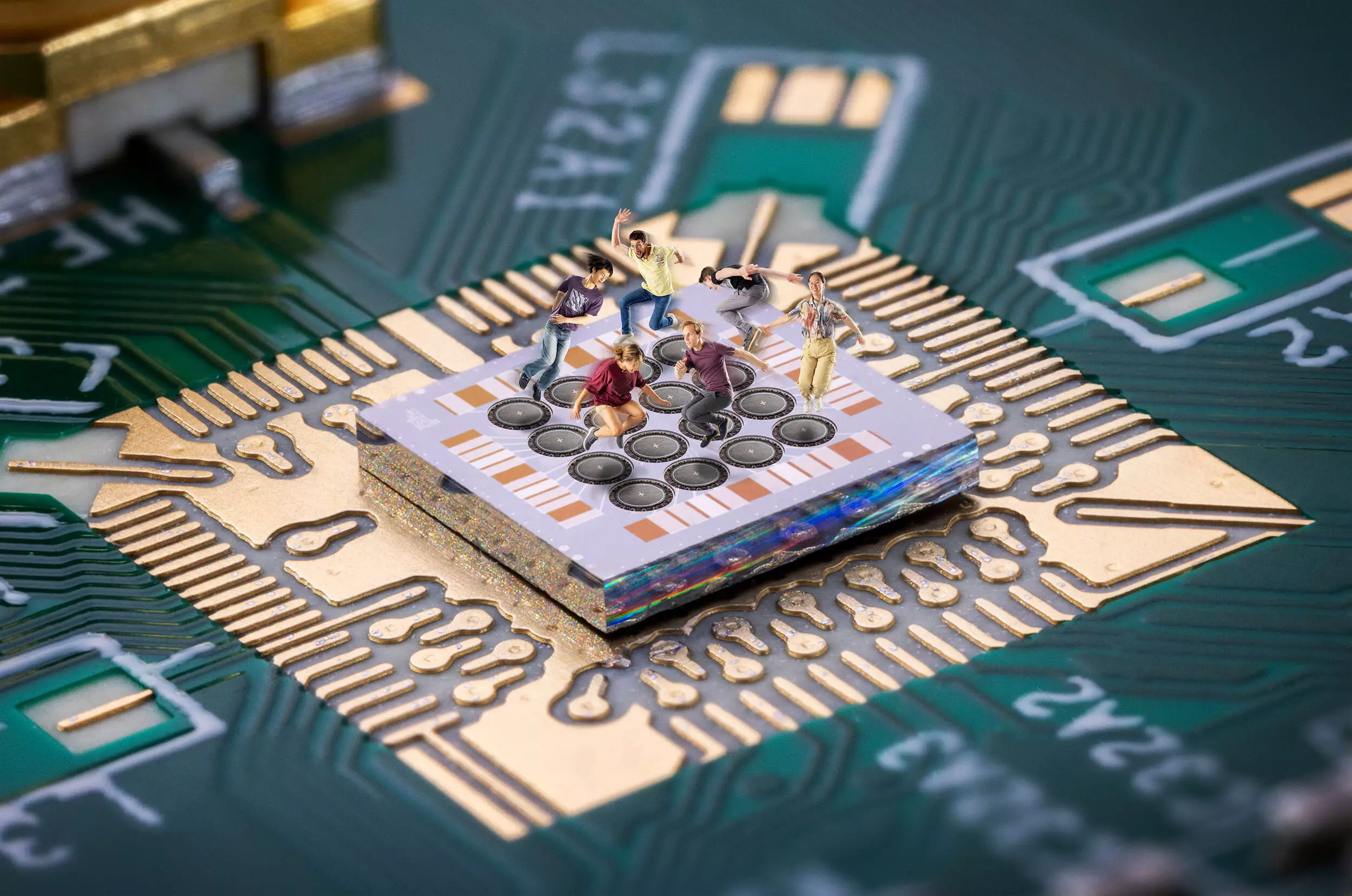The domain of quantum computing is witnessing significant advancements, notably with the breakthrough achieved by researchers at QuTech. Their development of somersaulting spin qubits could change the landscape of universal quantum logic as we know it. Their pioneering work, which demonstrates an efficient mechanism for controlling large arrays of semiconductor qubits, signals a substantial leap toward realizing practical quantum computers. This effort has culminated in the prominent publication of their findings in both *Nature Communications* and *Science*, marking an influential moment in the field.
Historically, the concept of utilizing hopping spins—first proposed in 1998 by physicists Loss and DiVincenzo—has remained largely theoretical until now. After two decades, QuTech’s groundbreaking experiments successfully bring this theory into the realm of tangible experimentation. It’s a testament to the innovative spirit of today’s scientists that they can bridge the gap between the theoretical blueprints of quantum computing and the complexities inherent in experimental setups.
The Shift from Microwave to Baseband Control
One of the core aspects of QuTech’s achievement lies in their method of controlling qubits without relying on microwave signals, which has been a standard approach up to this point. The researchers demonstrated that modest magnetic fields and baseband signals suffice for universal control. This is particularly revolutionary, as it heralds a potential simplification of the intricate control electronics typically required in quantum processors.
This simplification opens up new avenues for scaling quantum technology. The need for highly precise and technically demanding microwave control may soon be replaced with more accessible and straightforward methods, leading to enhanced efficiencies in qubit operation and performance.
Germanium: The Semiconductor of Choice
Central to the researchers’ findings is the use of germanium as a semiconductor platform for qubit fabrication. This choice is instrumental since germanium inherently supports spin rotations, a property that was leveraged to enhance control over qubit hopping. What makes this interesting is how it draws from recent research indicating that germanium could serve as a conductive medium for spin hopping in new quantum systems.
The research group’s earlier studies laid the groundwork, confirming that germanium can indeed facilitate crucial aspects of spin dynamics. The distinct advantages of using germanium over previous magnetic implementations illuminate a pathway toward more sophisticated quantum logic gates and circuits.
Understanding Spin Dynamics Through Visualization
The analogy of a trampoline park effectively elucidates the behavior of electron spins in quantum dot arrays. In this analogy, the trampoline represents a quantum dot, while the person jumping signifies an electron spin. This vivid visualization underscores the process of hopping between quantum dots, evoking the dynamism of electron movements in controlled setups. The element of somersaulting adds an exceptional twist—quite literally—pointing to the complexities involved in spin dynamics.
Indeed, the introduction of distinct torques experienced during hopping illustrates the nuanced interactions between spins across different quantum dots. As electrons transition from one quantum dot to another, they encounter variations in their spin direction, which can translate into practical properties desirable for quantum processing.
The Precision Paradigm in Quantum Computing
The QuTech team’s research uncovers that precise control over spin interactions is critical as one delves deeper into the capabilities of quantum computing. Their accomplishments of managing two spins in a four-quantum dot setup and expanding this control to hops across multiple dots emphasize the team’s commitment to operational excellence in quantum systems.
The research depicts a compelling image of precision being paramount; as co-author Francesco Borsoi suggests, the ability to control qubit interactions in larger arrays positions the research group at the forefront of quantum computing exploration. Establishing control routines to navigate through a 10-quantum dot array marks a significant milestone that could serve as the gateway to realizing more sophisticated quantum applications.
The Collective Effort Behind Groundbreaking Discoveries
The sense of camaraderie and collaboration evident in the project emerges as a significant theme. Principal investigator Menno Veldhorst celebrates the teamwork that has propelled their transformative findings within the span of just a year. This spirit of collaboration is fundamental in science and innovation, proving that big strides in technology often stem from cohesive group efforts rather than isolated discoveries.
By advancing techniques for manipulating spin qubits and further exploring the cascading implications of this research, the QuTech team stands poised to make profound contributions to the future of quantum technologies. The journey from theory to application reflects a deeper commitment to solving some of the most complex challenges in the realm of quantum mechanics, embodying a future where quantum computers might not just be a dream but a transformative reality.


Leave a Reply